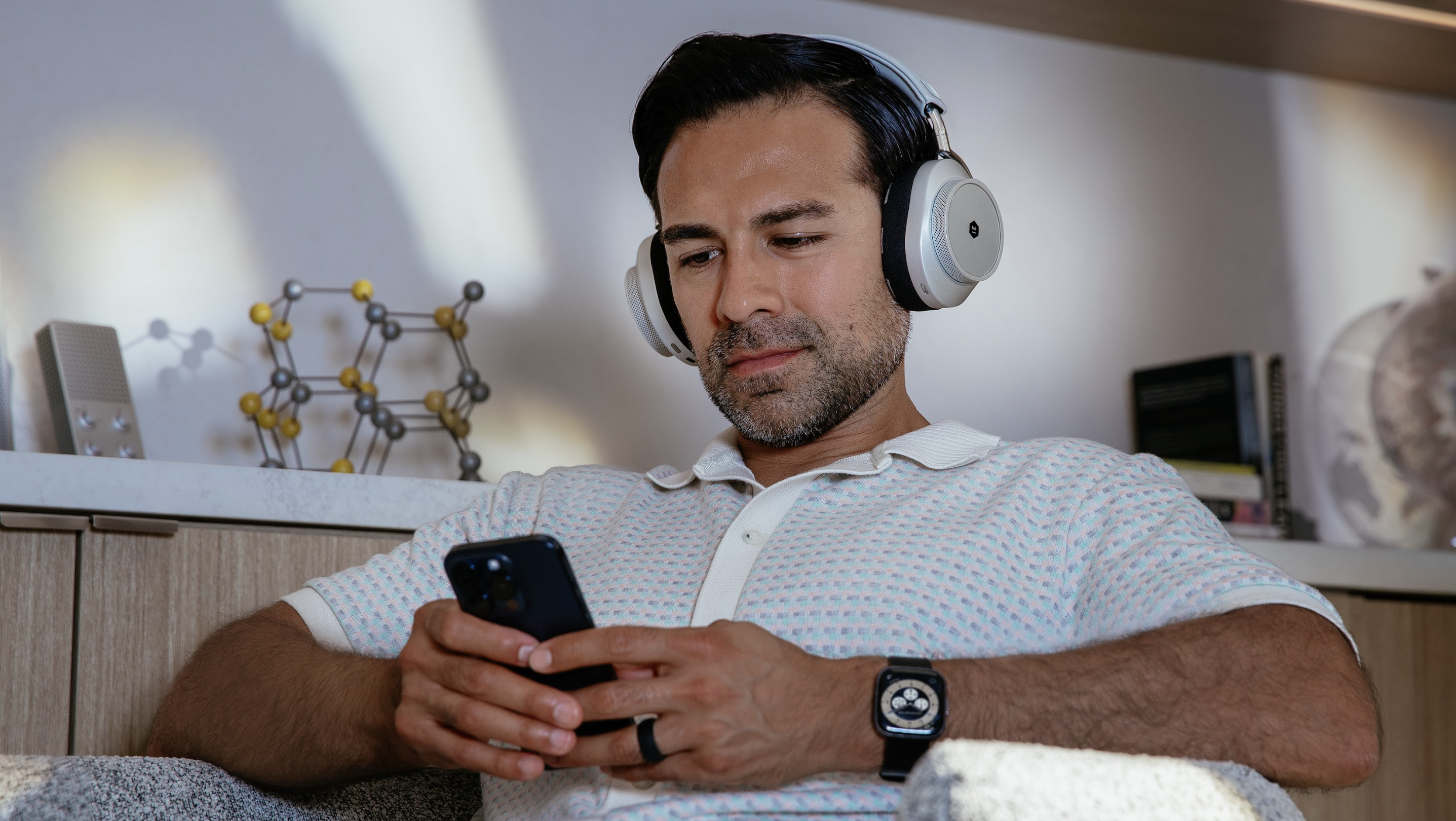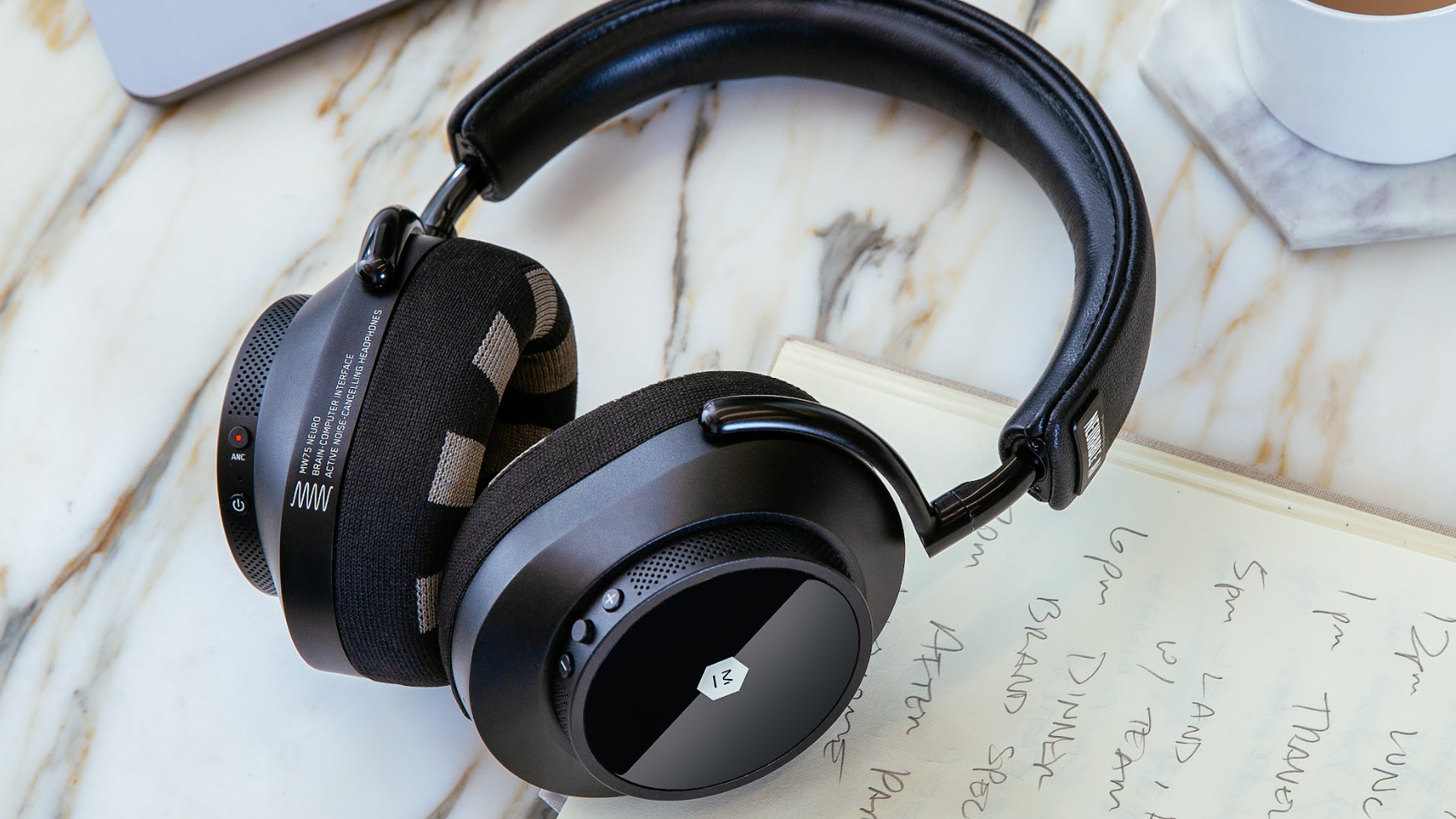They're real: Neurable's brainwave-reading headphones are here, promising to help you focus and avoid burnout
Headphones that read minds? Actually yes…

The concept of 'neural' headphones – and even the more aggressive term 'neurohacking' headphones – is not new. Wearables that blur the line between earbuds and brain implants were huge news in early 2023, while AI noise-cancelling headphones that can amplify the voice of the person you're looking at have been competing for your attention with in-ear computer 'hearables' for a little while now. And the example you're about to discover is 10 long years in the making.
Over- and in-ears that can interpret your brain's activity (otherwise known as reading your mind) do exist – and Neurable, the company responsible for one of the above early examples, has just teamed up with revered luxury headphone manufacturer, Master & Dynamic, to unveil a highly intriguing set available on the mass market, called the MW75 Neuro.
I'm conscious we're treading a fine line here. TechRadar can't offer guidance on anything medical-grade, since I'm a writer and audio reviewer, not a doctor (or a patient). At this stage though, Neurable tells me the chief aim with the MW75 Neuro is to help motivate, track focus trends, prevent burnout, and gain insight – for you (and only you) to benefit from. The future, says neuroscientist and founder of Neurable, Dr Ramses Alcaide, "is clinical diagnostics, but that's further down the line".
Those cans that used to just bring music to your ears are now making bigger and bolder claims about how they can help you be safer and more productive – see also, AirPods Pro 2 gaining that hearing-aid-like 'assistance mode'. So what can Neurable's new collab do? Let's dive in.
Lost focus today? Your headphones know it

The MW75 Neuro marry the build of Master & Dynamic's MW75 headphones (which also look a lot like the v2 MH40s from the brand) and Neurable’s brain-computer interface (BCI) technology – yes, that aforementioned 'brain-hacking' tech.
Dr Alcaide makes a very interesting point during my pre-briefing for the MW75 Neuro release: "Your brain has no pain receptors, so these headphones can help with that". The goal is to help users gain deeper insights into their cognitive health, manage burnout, and enhance daily performance, but as Dr Alcaide adds, "By the time your eyes are hurting from looking at the screen, your brain may have been needing a break for hours".
The MW75 Neuro is the first BCI-enabled consumer-grade device of its kind. How does it work? Neurable’s advanced AI-powered electroencephalography (EEG) sensors are incorporated in the headphone’s ear pads. These BCI-enabled EEG sensors can, says the company, actually capture and analyze brain signals as you wear them, to generate detailed brainwave data that offers valuable insights into focus levels and more. So yes, they really do read your mind(!) as long as you allow those ear pads to sit around your ear – long-haired wearers should sweep their hair back first.
Get daily insight, inspiration and deals in your inbox
Sign up for breaking news, reviews, opinion, top tech deals, and more.
And that's not all. You can read the brainwave data you're generating too, via the Neurable App for iOS and Android, which will even offer "brain trend summaries" and productivity tips, based on tasks you set for yourself (whether that's 'learn lines', or 'finish assignment', say). Through this focus and brainwave analysis, MW75 Neuro can even prompt you to take breaks when focus decreases, thus helping to avoid burnout at your desk.
Beyond its mind-reading capabilities, the MW75 Neuro promises to serve up the premium audio luxurious comfort that Master & Dynamic is known for, including a custom 40mm Beryllium driver and Bluetooth 5.2, plus eight microphones to filter out external noise for clear calls, and active noise cancellation. And even with noise-cancelling deployed and brainwave reading on, you'll get between 8 and 11 hours on a single charge.
The MW75 Neuro come in four colors: Silver, Onyx, Navy and Olive and can be ordered now in the US, for a retail price of $699. Starting Spring 2025, the MW75 Neuro will be available in Europe and UK for £629 / €729.
There's more to reading minds than simply telling you to rest…
So, these headphones can tell when you're focusing and when your attention's trailed off. But what about the influence of the very thing headphones were built to deliver – music? You may find listening to classical concertos helps you achieve that flow state, but might rock suit your current task better? Well, with the MW75 Neuro, there's on-device Spotify integration, so you can create specific playlists for various focus levels based on the readings you got while listening to certain artists or genres of music.
The future for Neurable, according to Dr Alcaide, is also to understand how you get distracted, and how your tech can help you fix it. And because they're a set of true smart headphones, the NW75 Neuro can actually run proprietary versions of apps, something Dr Alcaide likens to "the difference between the Blackberry and iPhone".
Picture the scene: you're working, but a message pops up on your screen asking if you're still up for catching a movie tonight? You stop. Of course you are! You should've confirmed earlier. You quickly compose a reply… phew, good. Now, where were you at with that report? Alcaide tells me that soon, a unique version of ChatGPT integration with Neurable products will mean you needn't stop, since one potential response will be heard – and could be sent directly – from the left ear in your headphones, another from your right. Job done.
Another example is Audible, where playback might automatically pause when you lose focus – you didn't get that last bit, and your headphones noticed, without you lifting a finger. This is a future where your eyes, your ears, your brain and the very movement of your head towards a subject are the computer interface your headphones are working with.

Helping with focus is good – but is there a downside to headphones that know when you're slacking?
I've said prior to today that I'm not sure whether this idea sits entirely well with me. I understand the concept – to provide the wearer with better knowledge of their own state of mental fatigue and thus avoid burnout, but I'd still argue that in the wrong hands (if line managers acquired that 'focus' data from employees' apps and favored staff who required fewer brain-breaks than others, say) the tech could seem a little… controlling. Dr. Alcaide assures me that all of the processing is on-device (rather than in-app) and anonymous as soon as it leaves – and that this really is a product for the user alone.
It's well-known that taking a quick five-minute screen-break when you need it will actually increase your focus for the next few hours – and if the MW75 Neuro gives you that prompt, that can only be a good thing. I wish we didn't need our headphones to tell us it's OK to take a break, but the world we live in is one where working to exhaustion is applauded, so believe me when I say I get it. Neurable's release is at once ground-breaking, fascinating and mildly terrifying to me – and I can't wait to try the MW75 Neuro out. Watch this space.
You may also like
- See our roundup of the best noise-cancelling headphones you can buy
- Here's our pick of the best noise-cancelling headphones
- And here's our guide to the best earbuds on the market

Becky became Audio Editor at TechRadar in 2024, but joined the team in 2022 as Senior Staff Writer, focusing on all things hi-fi. Before this, she spent three years at What Hi-Fi? testing and reviewing everything from wallet-friendly wireless earbuds to huge high-end sound systems. Prior to gaining her MA in Journalism in 2018, Becky freelanced as an arts critic alongside a 22-year career as a professional dancer and aerialist – any love of dance starts with a love of music. Becky has previously contributed to Stuff, FourFourTwo and The Stage. When not writing, she can still be found throwing shapes in a dance studio, these days with varying degrees of success.